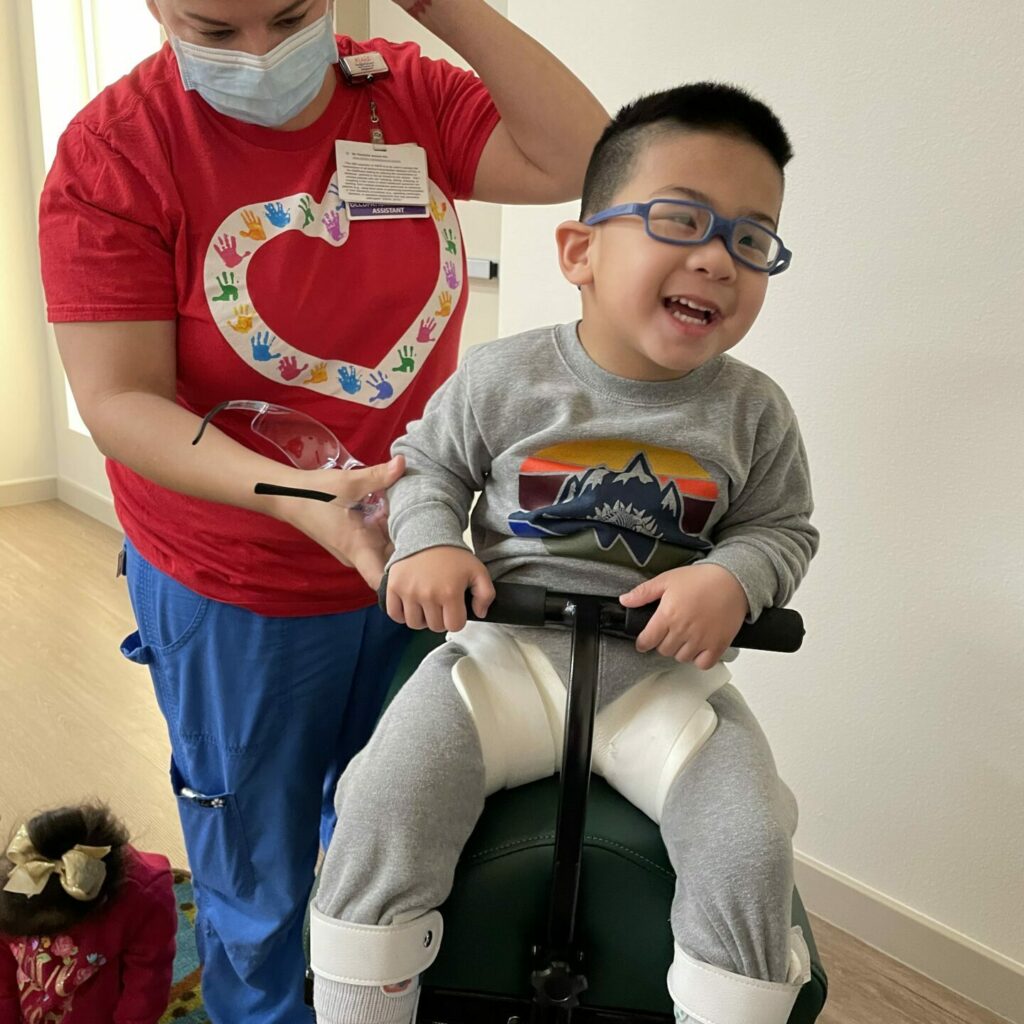
Hippotherapy, equine-assisted therapy, and therapeutic riding are increasingly being used to manage cerebral palsy in children. However, is there evidence that it actually helps? Does horseback riding indeed help and would an equine motion simulator like the MiraColt therefore be a good idea?
We have analyzed and cited 13 journal articles here for their findings regarding the effects of these therapies on spasticity, gross motor function, muscle spasticity, balance, motor proficiency, and functional ability in children with cerebral palsy.
What Research Shows
Hyun et al. (2022)1, Lucena-Antón et al. (2018)4 and Casady et al. (2004)11, in their studies found that hippotherapy and therapeutic horseback riding had a positive effect on spasticity in children with cerebral palsy, both in the short term and long term. Additionally, it was found that these therapies had a positive effect on gross motor function (Menor-Rodríguez et al. (2021)5, Park et al. (2014)3) and functional performance (Park et al. (2014)3), including improvements in sitting balance (Kang et al. (2012)6) and adductor muscle activity symmetry (McGibbon et al. (2009)7).
Therapy involving horseback riding was found to have positive effects on muscle spasticity (Lucena-Antón et al. (2018)4) and postural control (Zadnikar et al. (2011)10). Furthermore, Lee et al. (2014)9 found that both hippotherapy and horse-riding simulator training significantly improved balance in children with CP.
Several studies have also demonstrated that horseback riding therapy can improve motor proficiency and functional ability in children with CP. Champagne et al. (2017)8 found that hippotherapy improved motor proficiency and function in children with CP who were able to walk. Similarly, Chang et al. (2012)2 reported that hippotherapy significantly improved motor function in children with spastic bilateral CP.
The effects of horseback riding therapy on body functions, activities, and participation have also been evaluated. Hsieh et al. (2017)13 found that children who participated in hippotherapy showed significant improvements in various domains of the International Classification of Functioning, Disability, and Health for Children and Youth (ICF-CY). Shurtleff and Engsberg (2012)11 reported on a case study of a child with CP who participated in hippotherapy for five years. They found that the child showed significant improvements in range of motion, muscle tone, and motor function.
In summary, the benefits of horseback riding in hippotherapy, equine-assisted therapy, and therapeutic riding are diverse and wide-ranging, including improvements in spasticity, gross motor function, muscle spasticity, balance, motor proficiency, and functional ability in children with cerebral palsy. These benefits are attributed to the gait motion of a horse, which provides sensory input and can simulate the natural movements of walking. It can be reasonably concluded that horseback riding can be an effective and valuable therapy for children with cerebral palsy. Having horseback riding therapy as an addition to traditional therapy that you or a family member is receiving for cerebral palsy is certainly worth exploring with your doctor and/or therapist.
The Studies that were Reviewed
- Hyun, Cheolhwan, et al. “The short-term effects of hippotherapy and therapeutic horseback riding on spasticity in children with cerebral palsy: a meta-analysis.” Pediatric Physical Therapy 34.2 (2022): 172. (https://www.ncbi.nlm.nih.gov/pmc/articles/PMC8959353/)
- Chang, Hyun Jung, et al. “The effects of hippotherapy on the motor function of children with spastic bilateral cerebral palsy.” Journal of Physical Therapy Science 24.12 (2012): 1277-1280. (https://www.jstage.jst.go.jp/article/jpts/24/12/24_1277/_article/-char/ja/)
- Park, Eun Sook, et al. “Effects of hippotherapy on gross motor function and functional performance of children with cerebral palsy.” Yonsei medical journal 55.6 (2014): 1736-1742. ( https://synapse.koreamed.org/articles/1031432)
- Lucena-Antón, David, Ignacio Rosety-Rodríguez, and Jose A. Moral-Munoz. “Effects of a hippotherapy intervention on muscle spasticity in children with cerebral palsy: A randomized controlled trial.” Complementary therapies in clinical practice 31 (2018): 188-192. (https://www.sciencedirect.com/science/article/pii/S1744388118300227)
- Menor-Rodríguez, María José, et al. “Role and Effects of Hippotherapy in the Treatment of Children with Cerebral Palsy: A Systematic Review of the Literature.” Journal of Clinical Medicine 10.12 (2021): 2589. (https://www.mdpi.com/1146836)
- Kang, Hyungkyu, Jinhwa Jung, and Jaeho Yu. “Effects of hippotherapy on the sitting balance of children with cerebral palsy: a randomized control trial.” Journal of Physical Therapy Science 24.9 (2012): 833-836. (https://www.jstage.jst.go.jp/article/jpts/24/9/24_833/_article/-char/ja/)
- McGibbon, Nancy H., et al. “Immediate and long-term effects of hippotherapy on symmetry of adductor muscle activity and functional ability in children with spastic cerebral palsy.” Archives of physical medicine and rehabilitation 90.6 (2009): 966-974. ( https://www.sciencedirect.com/science/article/pii/S0003999309002044)
- Champagne, Danielle, Hélène Corriveau, and Claude Dugas. “Effect of hippotherapy on motor proficiency and function in children with cerebral palsy who walk.” Physical & occupational therapy in pediatrics 37.1 (2017): 51-63. ( https://www.tandfonline.com/doi/abs/10.3109/01942638.2015.1129386)
- Lee, Chae-woo, Seong Gil Kim, and Sang Su Na. “The effects of hippotherapy and a horse riding simulator on the balance of children with cerebral palsy.” Journal of physical therapy science 26.3 (2014): 423-425. (https://www.jstage.jst.go.jp/article/jpts/26/3/26_jpts-2013-399/_article/-char/ja/)
- Zadnikar, Monika, and Andrej Kastrin. “Effects of hippotherapy and therapeutic horseback riding on postural control or balance in children with cerebral palsy: a meta‐analysis.” Developmental medicine & child neurology 53.8 (2011): 684-691. (https://onlinelibrary.wiley.com/doi/abs/10.1111/j.1469-8749.2011.03951.x)
- Shurtleff, Tim, and Jack Engsberg. “Long-term effects of hippotherapy on one child with cerebral palsy: A research case study.” British Journal of Occupational Therapy 75.8 (2012): 359-366. (https://journals.sagepub.com/doi/pdf/10.4276/030802212X13433105374279)
- Casady, Renee L., and Deborah S. Nichols-Larsen. “The effect of hippotherapy on ten children with cerebral palsy.” Pediatric Physical Therapy 16.3 (2004): 165-172. (https://journals.lww.com/pedpt/FullText/2004/01630/The_Effect_of_Hippotherapy_on_Ten_Children_with.5.aspx)
- Hsieh, Yueh-Ling, et al. “Effects of hippotherapy on body functions, activities and participation in children with cerebral palsy based on ICF-CY assessments.” Disability and Rehabilitation 39.17 (2017): 1703-1713. (https://www.tandfonline.com/doi/abs/10.1080/09638288.2016.1207108)
